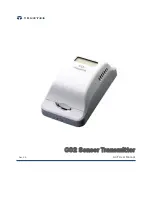
209
BARRETT PRC-4090 TACTICAL HF SDR TRANSCEIVER -APPENDICES
Factors Which Affect HF/SSB Communications
There are a number of different factors which will affect the success of commu-
nications via HF/SSB radio. These are outlined below:
Frequency Selection
Frequency selection is perhaps the most important factor that will determine
the success of your HF/SSB communications.
Generally speaking the greater the distance over which you want to communi-
cate, the higher the frequency you should use.
Beacon Call, a Selcall (Selective Call) function built into the Barrett PRC-4090
Transceiver, makes finding the correct frequency to use easy. A
Beacon Call is
based on the network of transceivers all having a selection of frequencies that
will accommodate most ionospheric conditions. When in standby, the network
transceivers scan these frequencies waiting for a call (Selcall or Beacon Call)
from another transceiver. The transceiver wishing to check for the best fre-
quency to operate on sends a Beacon Call to the station to be contacted. If
the call to the other station is successful, a revertive tone from the station
being called will be heard, indicating the channel selected was suitable for the
ionospheric conditions prevailing. If the revertive tone is not heard or is very
weak, another channel may be tried until a revertive tone of satisfactory signal
strength is heard.
(Refer to Beacon Calls on page 38 for more details.)
Time of Day
As a rule, the higher the sun, the higher the frequency that should be used. This
means that you will generally use a low frequency to communicate early morn-
ing, late afternoon and evening, but you will use a higher frequency to cover
the same distance during times when the sun is high in the sky (for example,
midday). You will need to observe the above rule carefully if your transceiver has
a limited number of frequencies programmed into it, as you may only be able
to communicate effectively at certain times of the day.













































